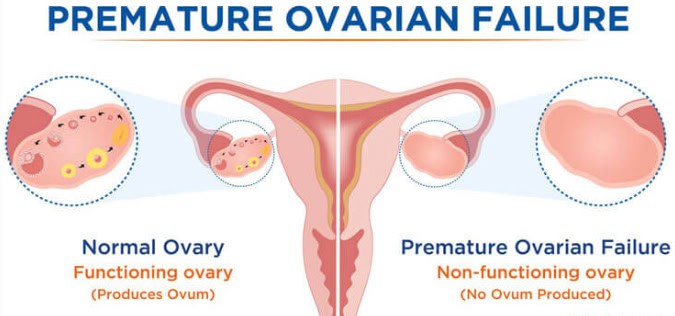Premature Ovarian Failure Syndrome (POF) Details
Premature ovarian failure is associated with an elevated FSH (follicle stimulating hormone) level. Symptoms include hot flashes, increased insomnia, vaginal dryness, irregular periods, or a loss of periods entirely in women less than 40 years of age. premature ovarian failure is actually quite common. There are four sub-types of premature ovarian failure, so the initial medical evaluation should determine which type a patient has. The most common is an autoimmune ovarian failure, in which a patient’s own antibodies “burn out” the eggs and ovaries. The second cause of premature ovarian failure is if a woman has mumps as an adolescent (after age 10), many of her eggs may “burn out,” which oftentimes results in premature ovarian failure. Many women are unaware that they’ve had an ovarian mumps infection until they are diagnosed with premature ovarian failure. The third cause of premature ovarian failure is Savage Syndrome, resulting from abnormal FSH hormone receptors. Finally, premature ovarian failure may be idiopathic, meaning a specific cause cannot be found.
If POF is diagnosed early, and the FSH levels are not significantly elevated, a patient has a reasonable chance of achieving pregnancy. However, a significant number of women with POF need donor egg IVF to become pregnant. Interestingly, for autoimmune POF patients, birth control pills may work backwards by actually increasing the chances of ovulation and conception, but with a relatively low success rate. An experimental method to treat Savage Syndrome involves laparoscopic removal of half of one ovary, thinly slicing it, removing and maturing the eggs, and then fertilizing them using IVF.

